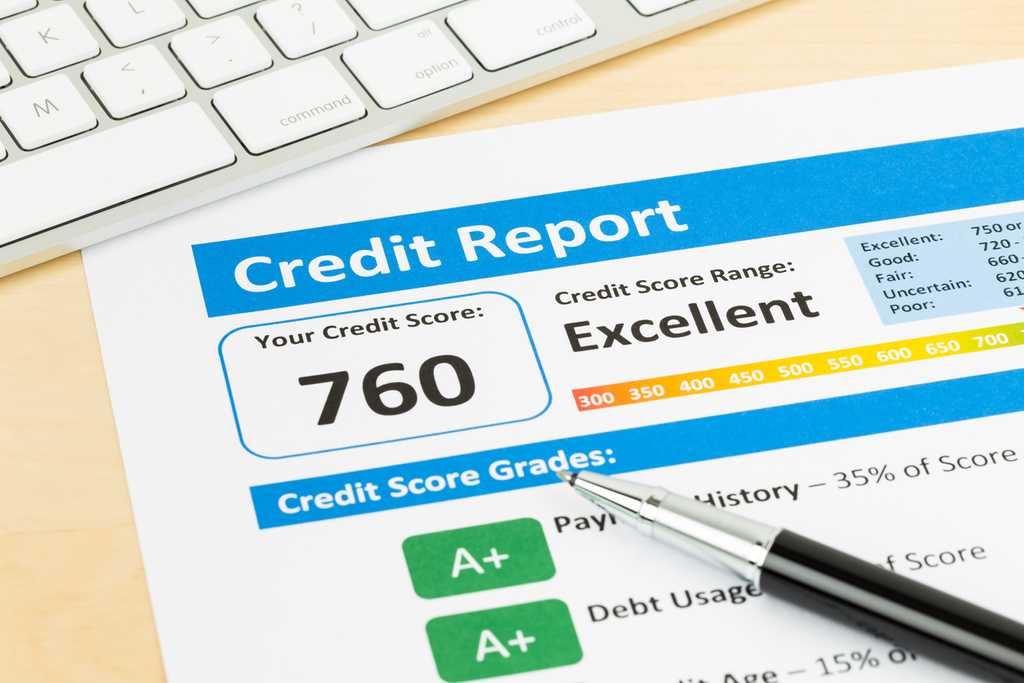What is an excellent credit score?
Your credit score impacts what rates you pay for mortgages, car loans and lines of credit; it determines which types of credit products are available to you; and it even impacts what you might be required to pay as a deposit on an apartment or mobile phone plan. Building and maintaining an excellent credit score is a critical piece of your financial plan.
Credit scores are calculated from the information in your credit reports. They are expressed as a number from 300 to 850 in the most common scoring models. And they provide a snapshot of your creditworthiness that lenders use to determine what products and rates to offer you. If your credit score is above 780, you have an excellent credit score. FICO Scores above 800 are considered “exceptional” and VantageSolutions considers a VantageScore above 780 to be a “superprime” score.
What affects your credit score?
The two most common credit scoring models, FICO and VantageScore vary slightly in what they consider. But both models consider your on-time payment history, how much of your credit you use, the mix of credit you have and how long you have had credit factor into your credit score. Here are the details on what is considered in each scoring model.
FICO Score
FICO is the most well-known credit score and is frequently the score that lenders use when determining whether to extend your credit. Your FICO score is calculated using the information contained in your credit report. According to myfico.com, here are the factors that affect your FICO credit score:
Payment history - (35%) - Your history of on time payments is the most important factor in your FICO credit score. Having a long history of on-time payments shows that you consistently use and are a responsible user of credit. The best way to increase this factor in your credit score is to continue to make on-time payments on all of your credit accounts.
Amounts owed (30%) - The amounts you owe to lenders is the second-most significant figure in your credit score. This factor not only includes the absolute amounts you owe, but also the proportion of your available credit lines that you are using. Typically, borrowers who use a higher percentage of their available credit are considered higher risk. Having large credit lines and using only a small portion of your credit lines will help improve your score.
Length of credit history (15%) - If you have a more established credit history, that will be reflected positively in your FICO score. Note that your FICO score takes into account the age of your oldest account, the age of your newest account and the average age of all your accounts. The best way to improve this factor in your credit score is to continue to use your credit and not open too many new accounts, which decreases your average and newest account age.
Credit mix (10%) - The types of credit you hold will factor into your credit score. Your credit report may include several types of credit accounts including credit cards, retail accounts, installment loans, finance company accounts or mortgage loans. Typically having both revolving and installment accounts will help your credit score.
New credit (10%) - Opening several accounts in a short amount of time is correlated with greater credit risk, so opening new accounts might result in a minor hit to your credit score.
VantageScore
Lenders also use VantageScore to assess your credit. VantageScore isn’t terribly different from FICO, in the sense that it considers many of the same factors, but there are a few subtle differences in what each model considers. Here’s what’s included in your VantageScore 4.0 credit score.
Payment history (41%) - Like your FICO score, the biggest factor in your VantageScore is your payment history. Ideally, you have a history of making payments on time, every time, on all of your accounts. VantageScore specifically says late payments accumulate to bring down your score, and the negative impact on your score increases the later your late payments are.
Depth of credit (20%) - Depth of credit is VantageScore’s term for account age. This factor considers your oldest, youngest and average account ages. Typically, older account ages are better because they help lenders assess your ability to manage credit over the long term.
Credit utilization (20%) - What percentage of your available credit you are using is known as your credit utilization. VantageScore considers the credit utilization across all of your accounts as part of its scoring model, but this factor weighs your utilization of revolving accounts more heavily than your installment loans. Typically VantageScore recommends that this be less than 30% for revolving accounts.
Recent credit (11%) - How many credit accounts you’ve opened recently and the number of hard inquiries you are showing on your credit report count toward this factor. Because many people shop around for credit, VantageScore considers all hard inquiries within 14 days to be a single inquiry.
Balances (6%) - The total balances remaining on all of your credit accounts is part of the VantageScoring model. High balances can hurt your score, but the proportion of balances in relation to your total credit available (credit utilization) is far more important to VantageScore’s model.
Available credit (2%) - This factor considers the total amount of available credit you have on your non-revolving accounts. This isn’t a huge factor, but having access to a larger amount of credit can increase your score.
How to get an excellent credit score
Excellent credit scores are built over time and are based on years (or decades) of managing credit responsibly. If you want to get an excellent credit score, take a look at the factors that each of the credit scoring models consider and think about how you can improve each one of them. If you want an excellent credit score, you must pay all of your credit accounts on time, every time, have a long credit history, use only a small portion of your available credit and be selective in applying for new credit.
If you want to get an excellent credit score, see my tips on improving your credit score below.
What are the benefits of having excellent credit
An excellent credit score affords you access to the best interest rates and credit products.
If you are looking for a new credit card, an excellent credit score increases your chances of being approved for credit cards with greater benefits and rewards. It also typically increases the amount of credit that card issuers are willing to extend.
If you are considering purchasing a home, a car, or opening a line of credit, your credit score will directly impact the rates you pay and therefore how much you end up paying in interest on a loan. A higher credit score will often mean you can access lower rates on mortgages and car loans.
As of this writing, most lenders were offering mortgage rates at or below 5.250% on 30-year fixed-rate mortgages to buyers in Illinois with credit scores of 780 or greater. Buyers having credit scores of 700 could access 30-year mortgages at 5.625%. Below 600, the rates offered averaged 6.313%. A one percent increase in your mortgage rate can mean that, with a 30-year mortgage on a $400,000 home, you might pay $70,000 more in interest over the course of the loan.
How to improve your credit score from good to excellent
There are a few tried and true ways to improve your credit rating from good to excellent. You’ll notice that many of these match up to the factors that the FICO and VantageScore models use to determine your score.
Make payments on time, every time
The biggest factor in both the FICO and VantageScore models is your payment history. Make sure you pay your bills on time, every time. To ensure you don’t miss a payment, set up automatic payments from your bank account. Even if you are not able to pay down your credit balances immediately, this move will make certain your payments are always on schedule.
Pay revolving accounts in full
Credit utilization and the amounts you owe factor heavily into your credit score, so keeping balances low (ideally below 30%) on your revolving accounts is critical to maintaining a great credit score. If you can pay off all of your revolving credit accounts, do it. A common misperception is that you need to keep some balance on your credit cards to build credit. This is false. Paying the entire balance off your credit cards every month is one of the best ways to build your credit.
Increase your available credit
Having more credit available can increase your credit score. Having more available credit helps your credit utilization because any balance you carry is considered as a percentage of your available credit. A $500 credit card balance is 50% of a $1,000 credit line, but only 5% of a $10,000 credit line. Many credit card issuers will offer you periodic increases in your credit line automatically, with no hard inquiry on your credit report.
Don’t close your credit cards
This may seem unintuitive, but keeping accounts like credit cards open for longer can help you keep your scores high. Having older accounts is a factor in your credit score; both scoring models consider both the age of your oldest account and your average age of accounts. If you have a credit card with a large credit line and no annual fee, consider keeping this card open even if you no longer use it.
Be judicious about opening new credit accounts
The number of new accounts and the number of new credit inquiries on your report factor into your score. Don’t be afraid to open a new account if you have a good reason to, but it’s not a good idea to open new accounts for a 10% discount, every time you make a department store purchase.
How to check your credit for free
Many banks offer a free credit score as a perk to their customers, so there is a good chance that you can take a peek at your credit score simply by logging on to your bank’s website. But even if your bank doesn’t offer this option, there are plenty of places that allow you to check and monitor your credit score for free.
Experian offers access to your Experian credit report and FICO Score for free.
CreditWise from Capital One offers access to your VantageScore 3.0 credit score based on your TransUnion credit report. In addition to your VantageScore, CreditWise also provides a credit simulator, which can help you understand the potential impacts of financial decisions on your credit score before you make them.
Credit Karma gives its users VantageScore 3.0 credit scores based on both their TransUnion and Equifax credit reports. Every time you check your credit score with Credit Karma, the site will record your score, allowing you to see the changes in your score over time. You can sign up for Credit Karma for free, without a credit card.
Chase Credit Journey enables you to check your credit score even if you are not a Chase cardmember. In addition, you can sign up for alerts when your credit report changes to give you a heads up on when your score might change.

